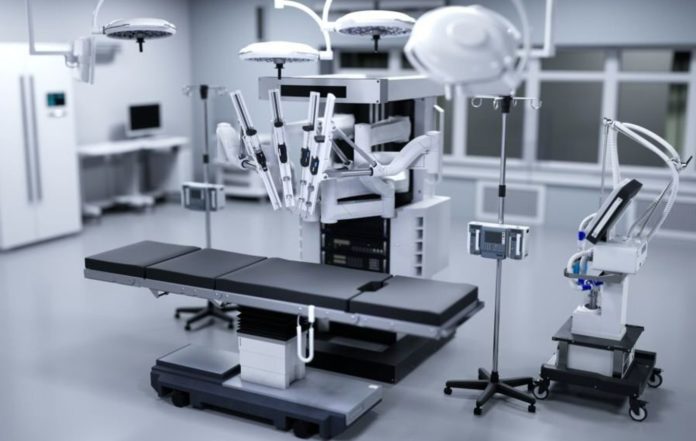Recently, many articles have discussed how machines would eventually replace people in a wide range of occupations, from automated transportation to automated journalism.
While some of us are more concerned than others, it seems logical to expect that highly specialized professions, such as medical care, will be somewhat protected from the approaching robo-revolution.
But maybe not.
A new study published in JAMA ended up finding that robotic surgery reduces the risk of readmission by half (52%) and shows a “striking” four-fold (77%) decrease in the rate of blood clots (deep vein thrombosis and pulmonary emboli) – a major cause of health decline and death – when especially in comparison to open surgery.
Stamina and quality of life also improved as a result of patients’ increased physical activity, as measured by the number of daily steps tracked by a wearable smart sensor.
The findings, according to the researchers, provide the strongest evidence yet of the patient benefit of robot-assisted surgery, and they are now urging the National Institute of Clinical Excellence (NICE) to make it a clinical option for all major abdominal surgeries in the UK, including colorectal, gastro-intestinal, and gynaecological procedures.
“Time in hospital is reduced and recovery is faster when using this advanced surgery,” says professor James Catto, co-chief investigator.
“We see fewer complications from the improved mobility and less time spent in bed.
“The study also points to future trends in healthcare. Soon, we may be able to monitor recovery after discharge, to find those developing problems. It is possible that tracking walking levels would highlight those who need a district nurse visit or perhaps a check-up sooner in the hospital.”
“An unexpected finding was the striking reduction in blood clots in patients receiving robotic surgery; this indicates a safe surgery with patients benefiting from far less complications, early mobilisation and a quicker return to normal life,” adds professor John Kelly, co-chief investigator.
Unlike open surgery, which includes a surgeon working directly on a patient and significant incisions in the skin and muscle, robot-assisted surgery allows physicians to remotely guide minimally invasive instruments using a console and a 3D display. It is now only offered in a few hospitals in the United Kingdom.
In bladder cancer, a growth of abnormal tissue known as a tumor forms in the lining of the bladder. The tumor can spread into the bladder muscle and cause secondary cancer in other parts of the body in some situations. Every year, almost 10,000 people in the UK are diagnosed with bladder cancer, and over 3,000 bladder removals and reconstructions are performed. It is one of the most costly types of cancer to treat.
338 patients with non-metastatic bladder cancer were randomly assigned to one of two groups: robot-assisted radical cystectomy (bladder removal) with intracorporeal reconstruction (process of extracting a portion of colon to form a new bladder) or open radical cystectomy.
The length of stay in the hospital after surgery was the trial’s primary endpoint. The robot-assisted group spent an average of eight days in the hospital, compared to ten days for the open surgery group — a 20% reduction. Return to the hospital within 90 days of surgery was also significantly lower in the robot-assisted group (21%) compared to 32% in the open group.
A total of 20 secondary outcomes were evaluated at 90 days, six months, and twelve months after surgery. Blood clots, wound complications, quality of life, disability, stamina, activity levels, and survival (morbidity) were among them. Robot-assisted surgery improved all secondary outcomes or, if not, was nearly as good as open surgery.
Both robot-assisted and open surgery are equally successful in terms of cancer recurrence and survival time, according to this and earlier research.
The study team is performing a health economic analysis to determine the quality-adjusted life year (QALY), which considers both quantity and quality of life.
Although open surgery remains the NICE “gold standard” recommendation for highly complicated operations, the research team hopes that this will change.
“In light of the positive findings,” according to Professor Kelly, “the perception of open surgery as the gold standard for major surgeries is now being challenged for the first time.”
Image Credit: Getty
You were reading: Surgical robots beat human surgeons: “striking” 77% fewer blood clots, better recovery
